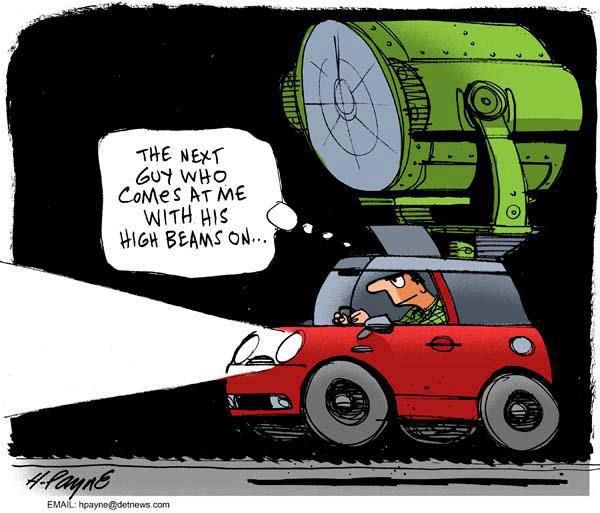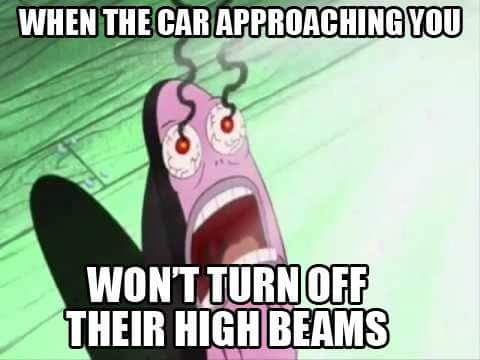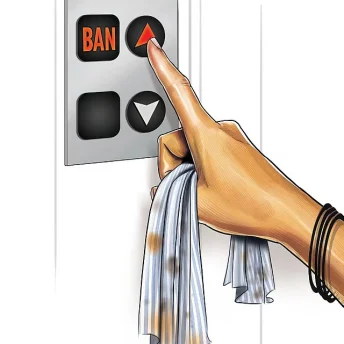How High Beams, White Lights, and Broken Infrastructure are Making Indian Roads Unsafe

If you drive in India at night, you already know this: High beam lights are making Indian roads unsafe. The moment a white LED beam hits your eyes, everything else disappears. The road, the curves, the potholes, the people everything becomes a blur. You blink hard, slow down, and pray that nothing unexpected appears in front of your vehicle. That brief moment of blindness is frightening. And the worst part is, it is now a normal part of Indian driving.

More and more people today drive with high beams or bright white lights not to show aggression, but simply because they think they have no other choice. Drivers feel that if they don’t use a brighter, wider, whiter beam, they will not be able to see the road—because the road itself is unreliable, and because everyone else around them is already driving with blinding lights. What began as a few irresponsible drivers has turned into a chain reaction in which ordinary people feel forced to adopt unsafe behaviour just to survive the chaotic darkness of Indian roads.
This is not just about discomfort. It is about basic safety, policy failure, and a kind of unspoken everyday retaliation that is shaping the way India drives today.
Why High-Beam Driving Has Become the “New Normal”
To understand the rise of harsh white lights, it helps to look at how fragile our road environment is. A large part of India still drives at night on roads with no street lighting at all. Even on major highways, it is not unusual to see long stretches in absolute darkness. When roads themselves disappear into the night, headlights become the only source of visibility. Naturally, people start installing brighter and brighter lights, often cheap, unregulated aftermarket LEDs, which scatter light unevenly and blind oncoming traffic. Many of these lights do not comply with India’s official standards under AIS-009 and AIS-024.
Add to that the condition of the roads, especially during the monsoon. Every rainy season brings fresh videos of highways cracking, city roads collapsing, flyovers sinking, and newly built stretches breaking within weeks. Yet, ministers continue claiming that India is building “roads better than America.”
According to Nitin Gadkari, Roads in Every Indian state will be like in America. Starting from Bihar, Rajasthan, Madhya Pradesh, North East, UP… By 2024. pic.twitter.com/f3Q3zlFcu4
— Mohammed Zubair (@zoo_bear) November 5, 2025
This monsoon, the gap between government claims and ground reality was painfully visible across the country. When the roads themselves are unpredictable, full of potholes, sudden speed breakers, stray animals, and pedestrians; drivers desperately try to carve out some sense of safety through their headlights.
And then there is the constant white glare from behind. Anyone who has tried to drive in the night while being followed by a bike or car with a harsh LED knows how distracting it is. You can’t see the rear traffic clearly. You lose depth perception. Your attention shifts from the road to the brightness behind you. It is a completely avoidable distraction, but one that almost every Indian driver goes through daily.
Always-on headlights on motorcycles
Another factor that has changed night driving in India is the introduction of always-on headlights on motorcycles. Since around 2017–2019, India has adopted global safety regulations under AIS-048, which require bikes above 50cc to run with their lights on even during the day. The intention was good, daytime running lights reduce accidents. But in India, where enforcement on beam alignment, glare control, and light intensity is weak, this has resulted in lakhs of bikes shining bright white beams at all times. Many bikes no longer even have a switch to turn the headlight off, and many drivers never switch to low beam. Combined with cheap bulbs and careless installation, they add unnecessary glare to an already chaotic road environment.
India once Controlled the High Beam Glare Better
People who grew up in the 80s and 90s will remember a time when traffic police would stop two-wheelers using high beams and paint the upper half of the headlight black. It was a simple, low-tech solution to prevent glare. This practice existed widely before the Central Motor Vehicles Rules (CMVR) were formalised. As crude as it was, it acknowledged something important: that blinding other drivers is not just irritating, it is dangerous.

Today, even with better technology, the enforcement is weaker. Headlight misuse is prohibited under the Motor Vehicles Act, 1988 and Central Motor Vehicle Rules, 1989. Rules clearly state that lights must not cause “glare or nuisance” (Rule 115), and that drivers must shift to low beam when facing oncoming traffic (Rule 106). But these rules exist mostly on paper. The average driver on the ground has no fear of being penalised for blinding someone.
Also read to Understand the Pollution Crisis of North India
The Supreme Court Steps In for Indian road safety: But Is Anyone Listening?
In October 2025, the Supreme Court finally took note of the uncontrolled rise in high-intensity LEDs, strobe lights, and hazardous beam modifications. A PIL filed by Dr. S. Rajaseekaran under Article 32 highlighted how dazzling lights were causing disorientation and compromising road safety. On 7th October 2025, the Court directed the Ministry of Road Transport and Highways (MoRTH) to strictly enforce luminance standards, beam angles, and compliance checks during Pollution Under Control (PUC) and fitness tests. It also banned unauthorised red-blue strobes and emergency hooters, and mandated nationwide awareness campaigns on the dangers of improper headlight use.
This is one of the strongest judicial interventions on road lighting India has ever seen. But judicial orders are only as useful as the governments that implement them. And here lies the real tension.
The Human Cost of Driving Blind
Night driving today has become an act of trust. Trust that the oncoming vehicle will dim it’s light, trust that the road will not hide a ditch, trust that nothing will jump out of the darkness in that one second when you’re blinded. Distracted driving is a major cause of accidents, and glare is one of the common sources of distraction. Even if official data on glare-related accidents is limited, every Indian who drives knows how real the danger feels.

We also underestimate the emotional impact of driving in such conditions. The frustration, the anxiety, the helplessness is exhausting. People become angrier behind the wheel. They retaliate with brighter lights, harsher driving, and more impatience. A simple thing like a headlight has slowly changed the driving culture of the country.
High Beam Lights Making Indian Roads Unsafe, So where do we go from here?
It is clear that this problem cannot be solved by blaming individual drivers. High-beam misuse is a symptom of deeper structural failures poor roads, nonexistent street lighting, weak enforcement, and unregulated aftermarket accessories. The government must light the roads it builds, enforce the standards it sets, and regulate the products it allows into the market. And we, as citizens, must reflect on our own choices. Visibility for oneself should not come at the cost of blinding someone else.
But somewhere we also need honesty, from policymakers, from transport authorities, and from ministers who proudly claim that India has world-class roads while citizens spend each monsoon navigating broken, flooded, pitch-dark stretches barely held together.
The Questions we must Ask: to Ourselves and to those in Power
- If our roads were truly built to global standards, why would average citizens feel the need to drive with high beams just to see what’s in front of them?
- If safety is truly a priority, why do illegal white LEDs and modified headlights still sell openly at every traffic signal?
- If our infrastructure is improving, why does night driving feel more dangerous today than it did twenty years ago?
And finally: As citizens, do we want to keep participating in this cycle of blinding one another, or do we want to break it?
And as a Country, when will we demand that visibility and safety stop being a privilege and become a basic right?
Subscribe to receive new posts
#CuriousTitans
Further Reading:
The courage to be yourself (and how pluralistic ignorance impacts)




